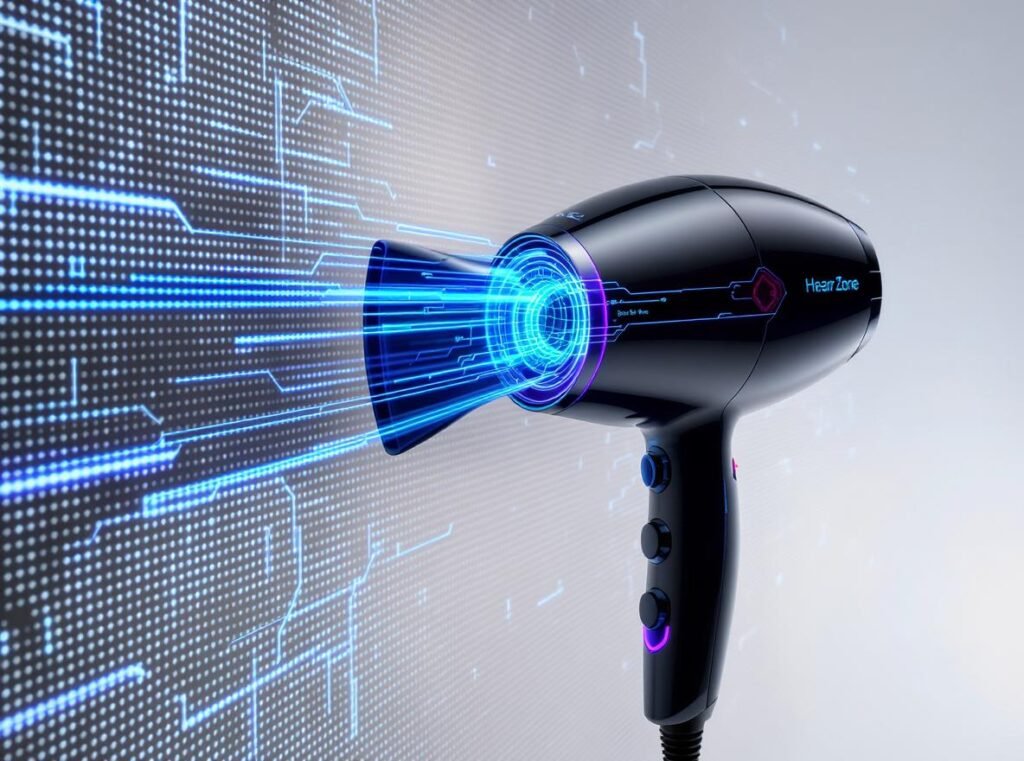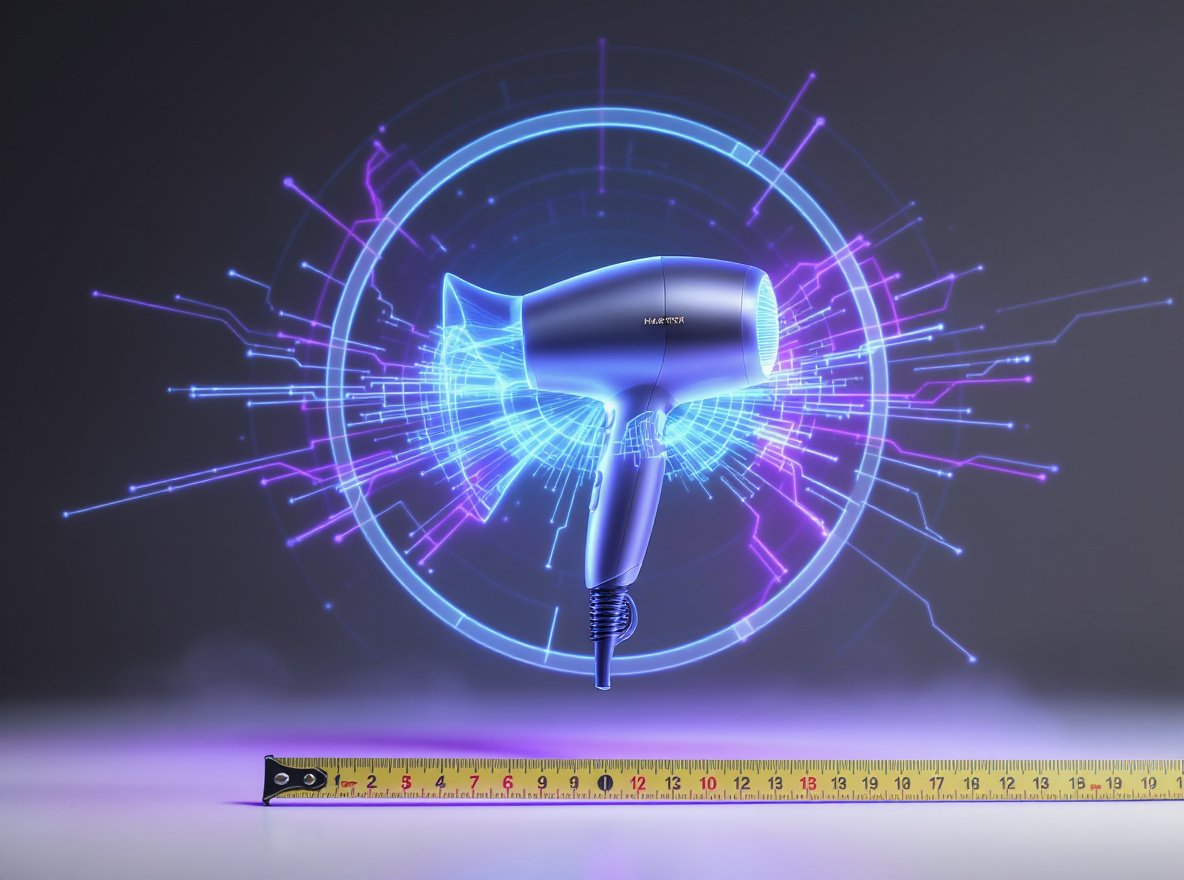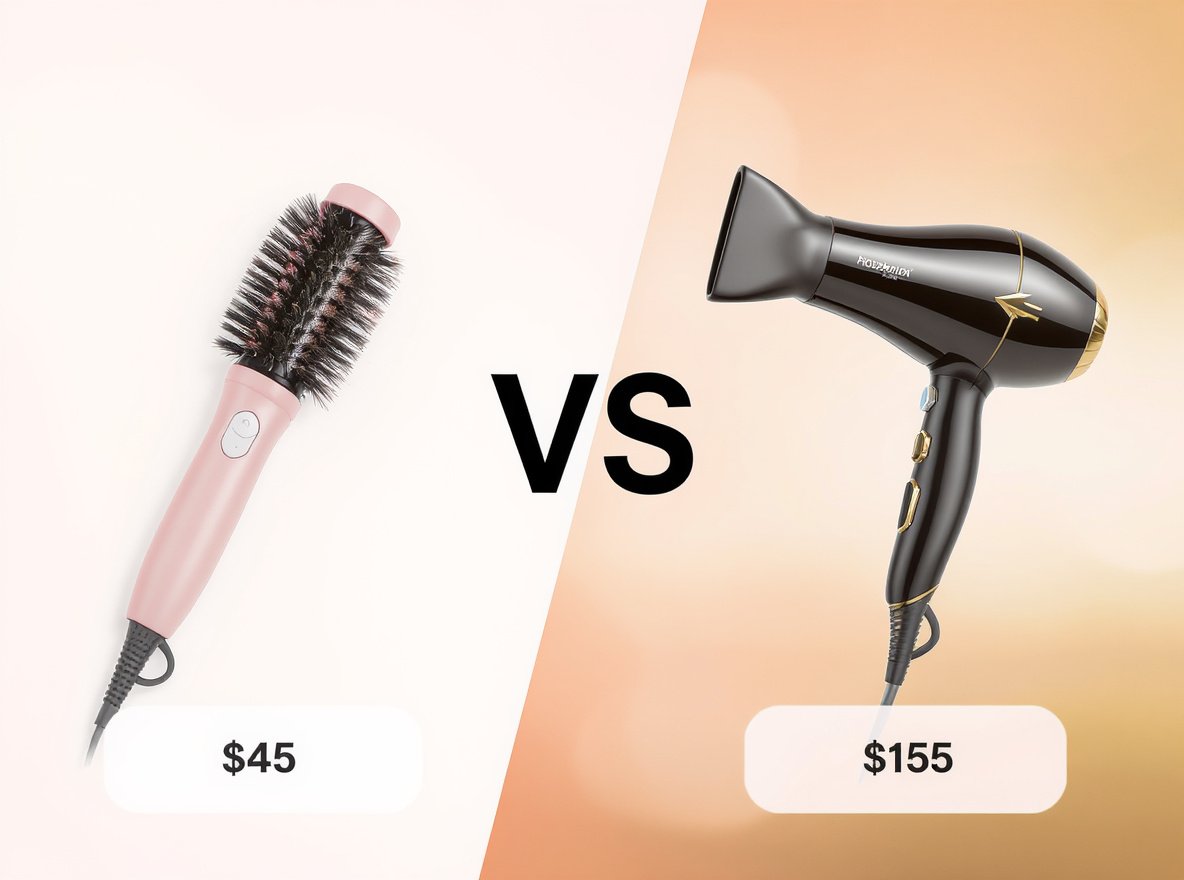Modern hair dryers are overheating and damaging your hair, but proximity sensors are changing everything. These smart devices automatically detect when your hair dryer is too close to your scalp or hair, instantly adjusting heat levels to prevent damage and ensure safe operation.
Proximity sensors in hair dryers work by detecting the distance between the dryer and your hair or scalp. When you get too close, these sensors automatically reduce heat output or airflow to prevent overheating, burning, or hair damage. Combined with temperature monitoring systems, they create a smart safety network that protects both users and the device itself.
But there’s much more to understand about how these revolutionary sensors are transforming hair care safety and performance.
Table of Contents
ToggleWhat Are Proximity Sensors and How Do They Work in Hair Dryers?
Understanding proximity sensors is crucial for anyone in the hair dryer wholesale business, especially when customers demand safer, smarter products.
Proximity sensors are electronic components that detect the presence or distance of objects without physical contact. In hair dryers, they use infrared or ultrasonic technology to measure distance and automatically adjust heat output when the dryer gets too close to hair or scalp, preventing overheating and damage.
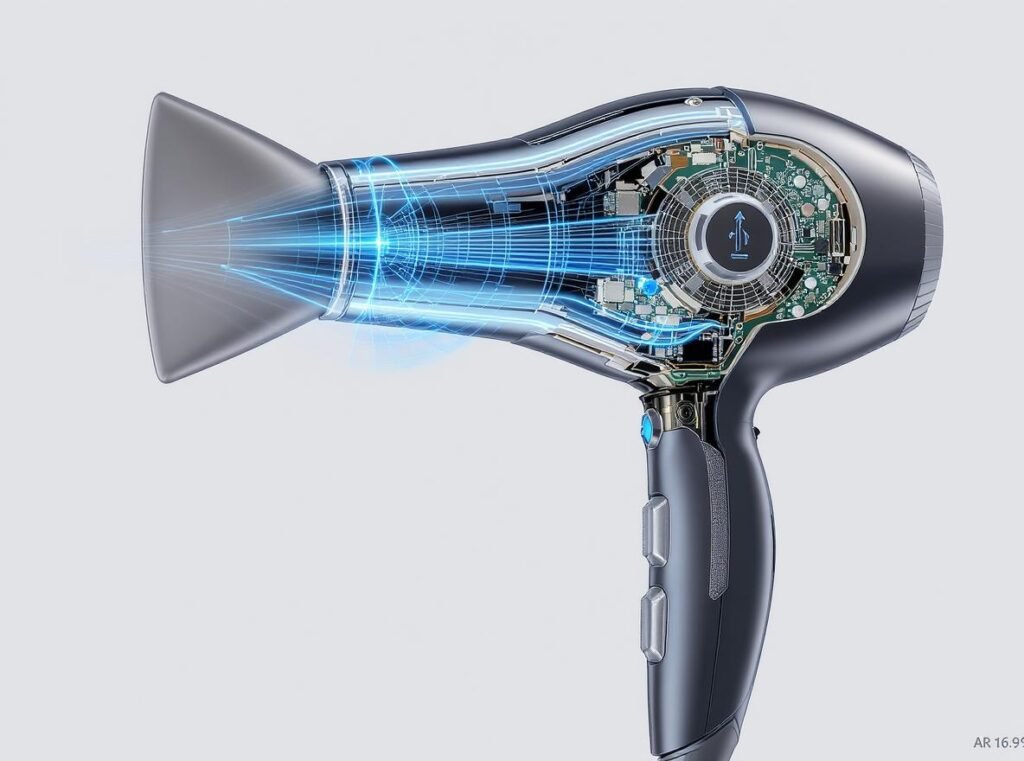
Time-of-Flight Sensor Technology
Time-of-flight sensors represent the most advanced proximity detection technology in modern hair dryers. These sensors emit infrared beams and measure the time it takes for the light to return after hitting your hair or scalp. This precise measurement allows for real-time heat adjustment based on exact distance.
The Dyson Supersonic Nural exemplifies this technology with its intelligent time-of-flight sensor that can detect proximity within milliseconds. When the dryer approaches your scalp, the sensor immediately communicates with the control system to reduce heat output automatically.
Professional-grade sensors can detect distances as small as 2-3 centimeters with remarkable accuracy. This precision ensures optimal heat distribution while maintaining safety margins that prevent scalp burns or excessive hair damage.
Integration with Humidity and Temperature Sensors
Modern proximity sensors work alongside humidity and temperature monitoring systems to create comprehensive protection. Humidity sensors detect moisture levels in your hair, while temperature sensors monitor the actual heat being applied.
| Sensor Type | Function | Response Time | Safety Benefit |
|---|---|---|---|
| Time-of-Flight | Distance detection | <50ms | Prevents close-range overheating |
| Humidity Sensor | Moisture monitoring | 100-200ms | Prevents over-drying |
| Temperature Sensor | Heat monitoring | <100ms | Maintains safe operating temperature |
| Motion Sensor | Activity detection | <30ms | Auto-pause when not in use |
Tineco’s Moda One S integrates humidity and proximity sensors specifically for heat optimization and damage reduction. This combination ensures that the dryer applies exactly the right amount of heat based on both distance and hair moisture content.
Why Do Hair Dryers Need Overheating Protection?
Hair dryers generate intense heat that can cause serious damage without proper safety mechanisms, making overheating protection essential for both users and businesses.
Hair dryers need overheating protection because they operate at temperatures exceeding 200°F (93°C), which can cause scalp burns, hair damage, and device malfunction. Without protection, prolonged exposure can lead to permanent hair follicle damage, fire hazards, and electrical safety risks.
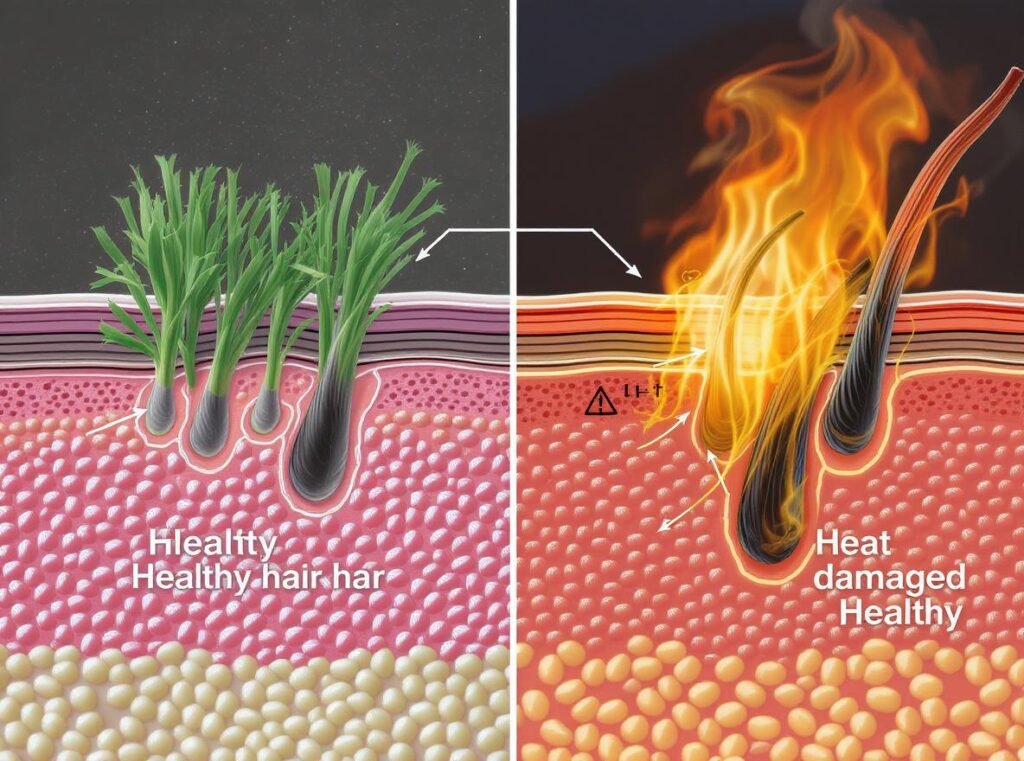
The Science Behind Heat Damage
Hair proteins begin to denature at temperatures above 140°F (60°C). When exposed to higher temperatures for extended periods, the hair cuticle lifts and moisture escapes, leading to brittleness and breakage. Excessive heat strips hair of its natural moisture, causing dryness and permanent structural damage.
Scalp burns can occur within seconds when temperatures exceed 120°F (49°C). The proximity sensor prevents this by maintaining safe distances automatically. Users don’t have to constantly monitor their positioning, making the styling process more comfortable and efficient.
Professional stylists know that thermal damage is cumulative. Each exposure to excessive heat compounds previous damage, eventually leading to hair that breaks easily and loses its natural shine and elasticity.
Fire and Electrical Hazards
Prolonged overheating can damage internal components, increasing the risk of fire or electric shock. Hair dryers without proper overheating protection can experience:
- Internal component failure leading to electrical shorts
- Heating element burnout causing fire hazards
- Circuit board damage resulting in unpredictable operation
- Insulation breakdown creating shock risks
For wholesale buyers, these safety concerns translate directly into liability issues, warranty claims, and potential product recalls that can devastate business relationships.
How Do Proximity Sensors Prevent Overheating Damage?
Proximity sensors create an intelligent safety barrier that automatically responds to potential overheating situations before damage occurs.
Proximity sensors prevent overheating damage by continuously monitoring distance and automatically reducing heat output when the dryer gets too close. Advanced models like Dyson’s Scalp Protect Mode lower heat to 131°F when near the head, while also providing visual and audio feedback to guide safe usage.
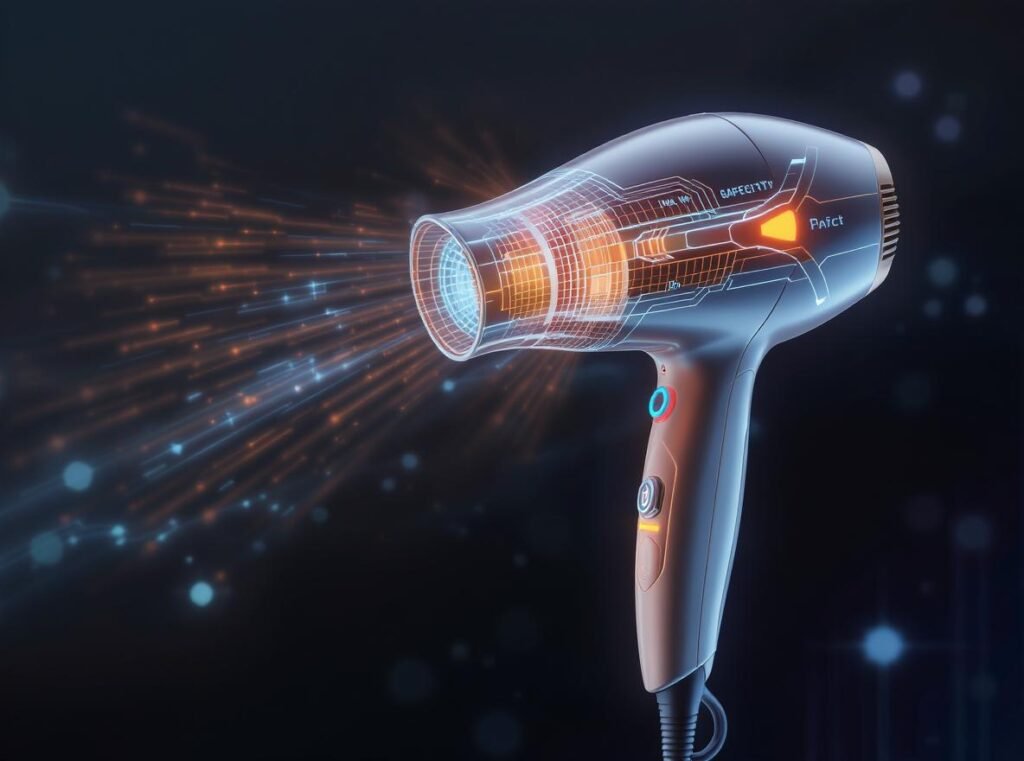
Automatic Heat Reduction Systems
The most sophisticated proximity sensors don’t just detect distance—they calculate the optimal heat level for each situation. When the sensor detects dangerous proximity, several coordinated actions occur:
Temperature reduction happens gradually rather than suddenly. The Dyson Supersonic Nural demonstrates this with its intelligent heat control that adjusts smoothly based on proximity measurements. This prevents thermal shock to the hair while maintaining effective drying.
Airflow modulation works in conjunction with heat reduction. Sharp’s proximity sensor and AI technology automatically adjust both airflow and temperature for optimal performance. Lower airflow concentrates less heat in one area, while higher airflow can help dissipate excess heat quickly.
Motion-Sensing Auto-Pause Technology
Several leading brands now incorporate motion-sensing capabilities that work alongside proximity sensors:
- BaBylissPRO Studio Design Series: Features sensor-based auto start/stop for safety and convenience
- Paul Mitchell Neuro: Includes auto-pause sensor for hands-free operation
- Dyson Supersonic Nural: Motion-sensing auto-pause when the dryer is set down
These systems automatically shut off or pause the heater when the dryer is set down or not in use, reducing unnecessary heat buildup and extending component life.
Visual and Audio Safety Feedback
Modern proximity sensors provide real-time feedback through LED indicators and audio alerts:
LED color changes indicate safe or unsafe distances and temperatures. Green typically means safe operation, while red warns of excessive heat or dangerous proximity. Some models use gradual color transitions to show proximity levels.
Audio cues complement visual feedback, especially useful in noisy salon environments. Gentle beeps can warn users when they’re getting too close, while different tones indicate various safety states.
What Other Safety Features Work with Proximity Sensors?
Modern hair dryers combine proximity sensors with multiple safety technologies to create comprehensive protection systems that exceed industry standards.
Proximity sensors work alongside thermal cut-off switches, bimetallic strips, automatic shut-off mechanisms, and cool shot buttons. This multi-layered approach ensures that even if one safety feature fails, backup systems prevent overheating, creating redundant protection that meets professional safety standards.
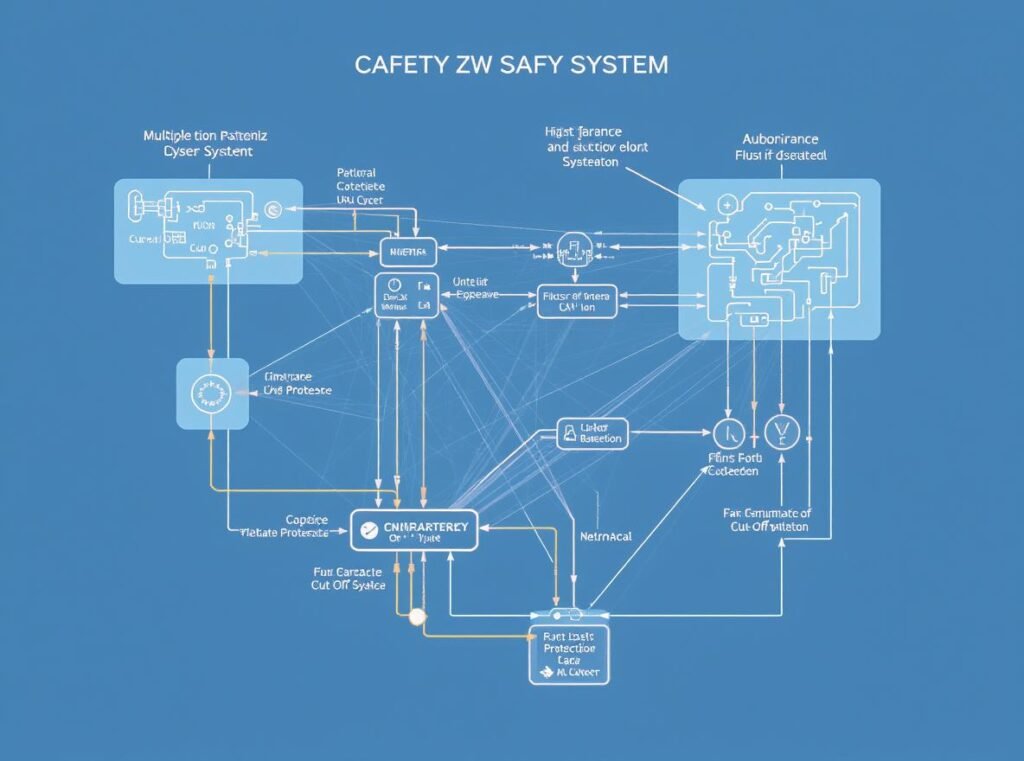
Thermal Protection Components
Traditional thermal protection works as a backup to proximity sensors:
- Thermal cut-off switches: Automatically shut off the dryer if internal temperatures exceed safe limits
- Bimetallic strips and thermal fuses: Act as fail-safes to break the circuit in case of overheating
- Protective screens and insulation: Prevent lint buildup and keep the exterior cool to the touch
These components provide essential protection even if the proximity sensor system experiences a malfunction.
Smart Integration Features
Advanced proximity sensors integrate with other intelligent systems:
Attachment Recognition: Dyson’s system can detect which attachment is being used and adjust heat settings accordingly. Different attachments require different proximity sensitivities and heat levels.
AI-Powered Optimization: Sharp’s latest models use AI alongside proximity sensors to analyze hair type, moisture, and environmental conditions for personalized drying experiences.
Cool Shot Integration: Instant temperature reduction buttons work with proximity sensors to provide immediate relief from excessive heat buildup.
Are Proximity Sensors Worth the Investment for Wholesale Buyers?
For wholesale buyers, proximity sensors represent a significant value proposition that impacts both immediate sales and long-term customer relationships.
Proximity sensors are definitely worth the investment for wholesale buyers because they provide enhanced safety, longer product lifespan, premium market positioning, and energy efficiency. These benefits translate to reduced liability, fewer returns, and the ability to command higher prices in the competitive hair care market.

Cost-Benefit Analysis for Retailers
| Factor | Without Proximity Sensors | With Proximity Sensors |
|---|---|---|
| Return Rate | 8-12% | 3-5% |
| Customer Complaints | 15-20% | 5-8% |
| Average Selling Price | $30-50 | $80-300 |
| Warranty Claims | 6-10% | 2-4% |
| Product Lifespan | 2-3 years | 4-6 years |
The initial investment in proximity sensor technology pays for itself through reduced warranty claims and higher customer satisfaction. Less overheating means less wear on internal components, significantly extending product life.
Premium Market Positioning
Proximity sensors position your products in the premium safety category where smart features appeal to salons and tech-savvy consumers. This differentiation allows for higher price points and better profit margins.
Professional salons particularly value proximity sensors because they:
- Reduce training time for new stylists
- Minimize the risk of client injuries
- Demonstrate commitment to safety and quality
- Justify premium service pricing
Energy Efficiency Benefits
Automatic shut-off and heat adjustment features save power over time, reducing operating costs for professional users. This efficiency becomes a selling point for environmentally conscious consumers and cost-conscious businesses.
Which Hair Dryer Brands Are Leading in Proximity Sensor Technology?
Several manufacturers are pioneering proximity sensor integration, with each offering unique approaches to safety and performance optimization.
Leading brands in proximity sensor technology include Dyson with intelligent heat control, Tineco with integrated humidity sensors, Sharp with AI-powered optimization, BaBylissPRO with auto start/stop, and Paul Mitchell with hands-free operation. These brands demonstrate consistent innovation that wholesale buyers can trust.
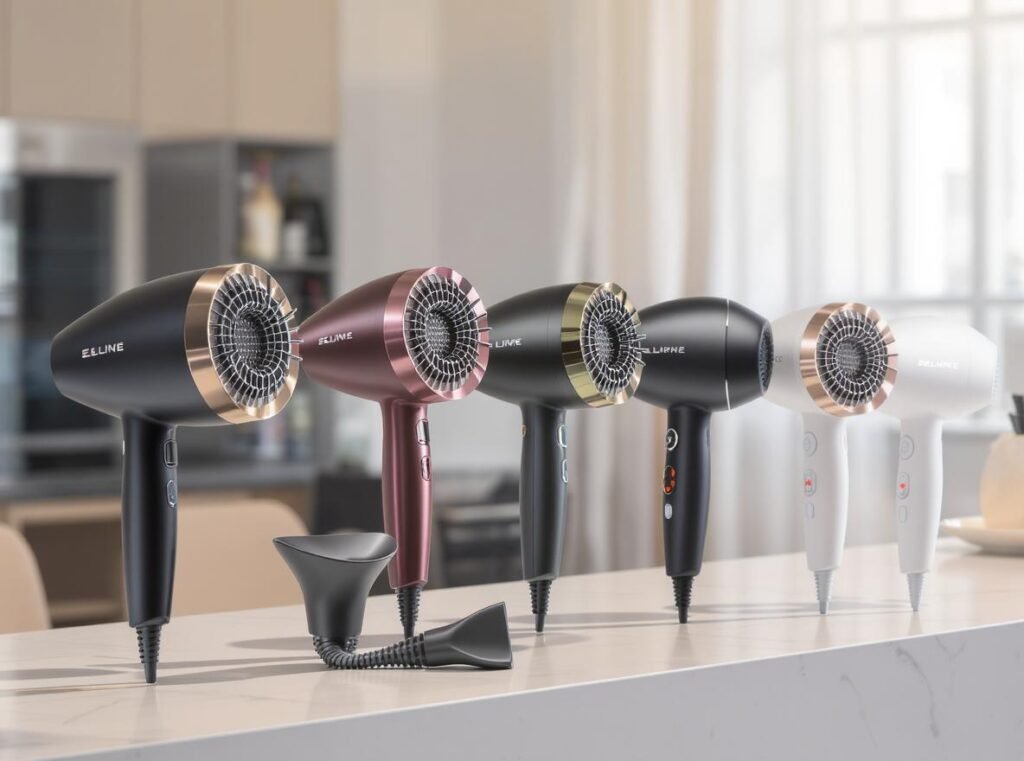
Premium Technology Leaders
| Brand | Model | Key Proximity Sensor Features |
|---|---|---|
| Dyson | Supersonic Nural | Time-of-flight sensor, Scalp Protect Mode, motion-sensing auto-pause, attachment recognition |
| Tineco | Moda One S | Humidity and proximity sensors for heat optimization and damage reduction |
| Sharp | Latest AI Models | Proximity sensor and AI for automatic airflow temperature adjustment |
| BaBylissPRO | Studio Design Series | Sensor-based auto start/stop for safety and convenience |
| Paul Mitchell | Neuro Series | Auto pause sensor for hands-free operation |
Dyson’s Market-Leading Innovation
The Dyson Supersonic Nural represents the pinnacle of proximity sensor technology. Its time-of-flight sensor measures distance over 100 times per second, providing unprecedented precision in heat control. The Scalp Protect Mode specifically reduces heat to 131°F when the sensor detects proximity to the scalp.
Dyson’s attachment recognition system works with proximity sensors to automatically adjust settings for different styling tools. This intelligence removes guesswork and ensures optimal performance for every attachment.
Emerging Brand Innovations
Tineco’s entry into the hair dryer market with the Moda One S demonstrates how proximity sensors are becoming standard in premium models. Their integration of humidity sensors with proximity detection creates a more comprehensive approach to hair protection.
Sharp’s AI-powered systems represent the future of proximity sensor technology, using machine learning to optimize performance based on individual usage patterns and hair characteristics.
Conason’s Advanced Safety Integration
Conason’s P1C high-speed hair dryer represents excellent value in proximity sensor technology for wholesale buyers. The device integrates multiple safety systems including:
Distance monitoring with automatic heat adjustment capabilities that respond within milliseconds to prevent overheating while maintaining optimal drying performance.
Temperature regulation that works independently of proximity sensors, ensuring continuous protection even if one system experiences issues.
Professional-grade construction designed for daily commercial use without losing sensitivity or accuracy over time.
For wholesale buyers interested in Conason’s advanced safety features, explore the P1C high-speed hair dryer or browse the complete product collection for additional options.
What Should Wholesale Buyers Look for in Proximity Sensor Systems?
When evaluating proximity sensor systems for wholesale purchase, specific technical specifications and reliability factors determine long-term success.
Wholesale buyers should prioritize sensor accuracy and response time, integration with other safety features, user feedback mechanisms, durability and maintenance requirements, and brand reputation with international safety certifications. These factors ensure reliable performance and customer satisfaction.

Technical Specifications to Evaluate
Response Time: Fast, reliable detection for real-time heat adjustment is crucial. Professional-grade sensors should respond within 50 milliseconds to prevent any heat damage. The Dyson Supersonic Nural’s sub-50ms response time sets the industry standard.
Detection Accuracy: The sensor should maintain consistent performance across different hair types, colors, and textures. Some sensors struggle with very dark or very light hair, so comprehensive testing across diverse conditions is essential.
Integration Capabilities: Ensure the dryer also has thermal cut-offs, fuses, and insulation working in coordination with proximity sensors. This multi-layered protection provides redundant safety systems.
User Experience Features
- LED indicators or audio alerts for safe operation guidance
- Intuitive feedback that doesn’t distract from styling
- Consistent performance across different environmental conditions
- Easy maintenance and calibration procedures
Durability and Reliability Standards
Sensors must be robust and not prone to failure or false triggers. Professional use involves constant movement, vibration, and exposure to heat and humidity. Quality sensors should maintain accuracy over 10,000+ operating hours without degradation.
Brand reputation and certifications matter significantly. Choose manufacturers with proven safety records and compliance with international standards like UL, CE, and FCC certifications.
How Will Proximity Sensor Technology Evolve in Hair Dryers?
The future of proximity sensor technology in hair dryers involves artificial intelligence, personalized safety profiles, and enhanced connectivity capabilities.
Proximity sensor technology will evolve toward smarter, more adaptive systems using AI to analyze hair type, moisture, and environmental conditions. Future integration with mobile apps will provide real-time feedback and maintenance alerts, while improved energy efficiency and expanded safety features will become standard.
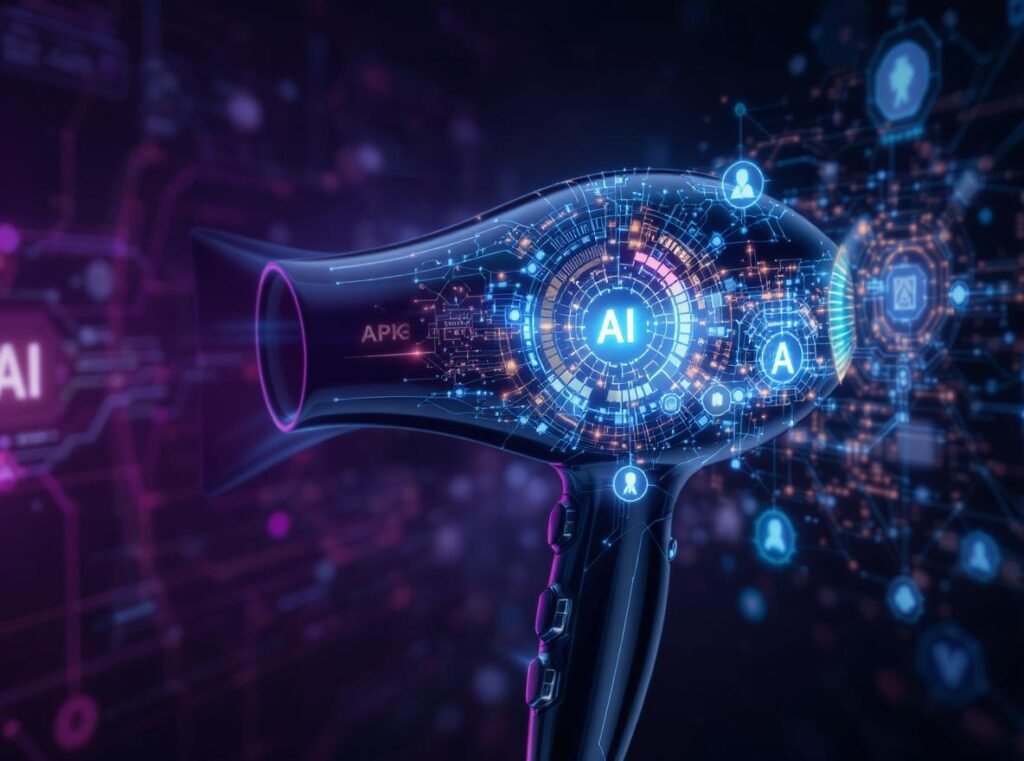
AI-Powered Personalization
Future dryers will use AI to analyze hair type, moisture, and environmental conditions for personalized drying experiences. Machine learning algorithms will remember user preferences and automatically adjust settings for different attachments or styling techniques.
These intelligent systems will predict when overheating might occur based on usage patterns, proactively adjusting heat and airflow to prevent damage before it happens.
Mobile App Integration
Users will receive real-time feedback and maintenance alerts via smartphone apps. These applications will track:
- Usage patterns and styling techniques
- Sensor performance and calibration status
- Maintenance schedules and component health
- Energy consumption and efficiency metrics
Professional salons will benefit from fleet management capabilities, monitoring multiple dryers simultaneously and receiving alerts for maintenance or replacement needs.
Enhanced Safety and Hygiene Features
Future proximity sensors will integrate with additional safety technologies:
- UV sterilization systems that activate when the dryer is not in use
- Quieter operation through intelligent motor control
- Ergonomic design improvements based on usage data
- Environmental sensors that adjust performance based on humidity and temperature
Greater Customization and Automation
Devices will remember individual user preferences and automatically adjust settings for different people. Family members will each have personalized profiles that optimize heat, airflow, and proximity sensitivity based on their hair type and styling preferences.
Attachment recognition will become more sophisticated, with sensors that can identify not just which attachment is connected, but also the specific styling technique being used.
Summary
Proximity sensors in hair dryers represent a revolutionary safety advancement that prevents overheating through intelligent distance monitoring and automatic heat adjustment. These sensors work by detecting when the dryer gets too close to hair or scalp, then reducing heat output to prevent damage. Leading brands like Dyson, Tineco, Sharp, BaBylissPRO, and Paul Mitchell are setting new standards with time-of-flight sensors, AI integration, and motion-sensing capabilities.
For wholesale buyers, proximity sensor technology offers significant value through enhanced safety, reduced liability, longer product lifespan, and premium market positioning. The investment pays for itself through fewer returns, higher customer satisfaction, and the ability to command premium prices in an increasingly competitive market.
Ready to explore proximity sensor technology for your wholesale business? Browse our advanced hair dryer collection featuring the P1C model with integrated safety systems, or contact us for wholesale pricing on safety-focused hair dryers that your customers will trust and value.

